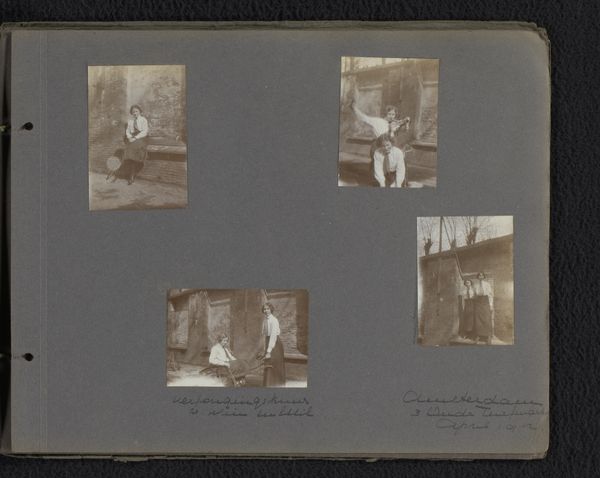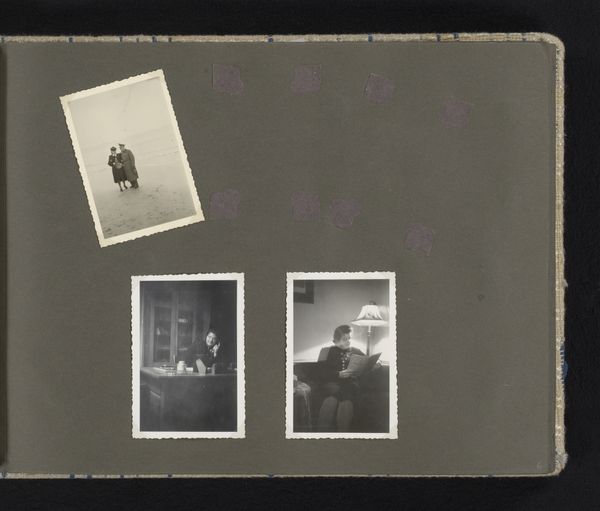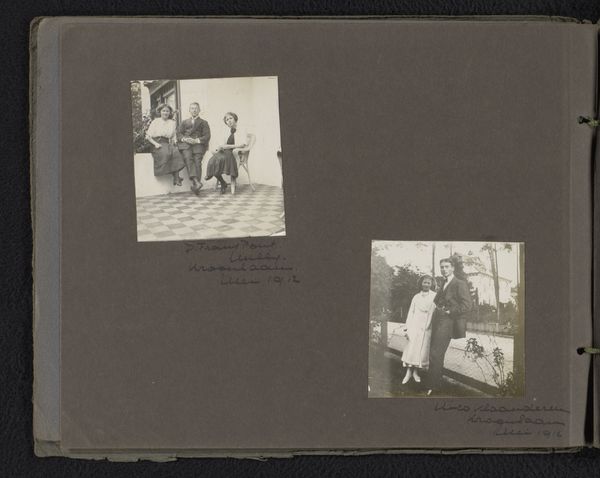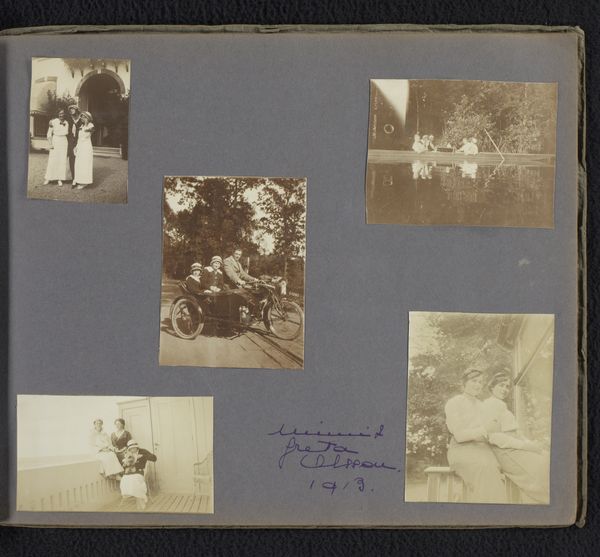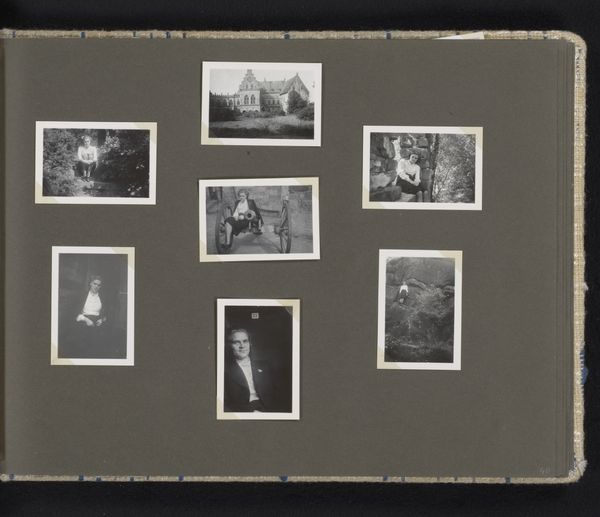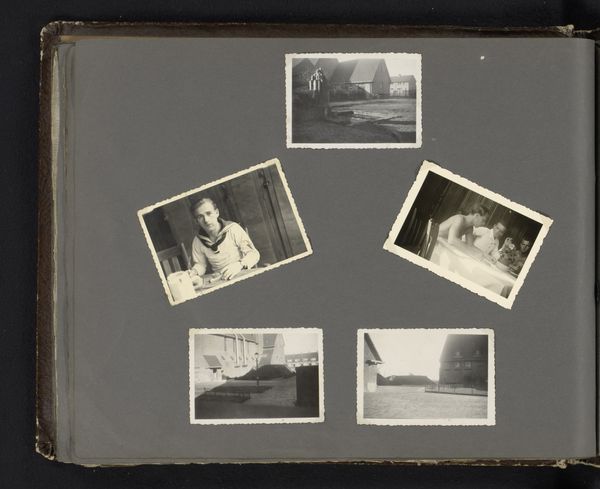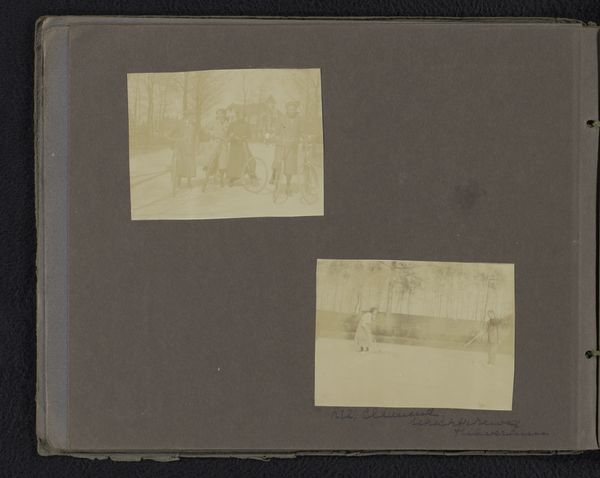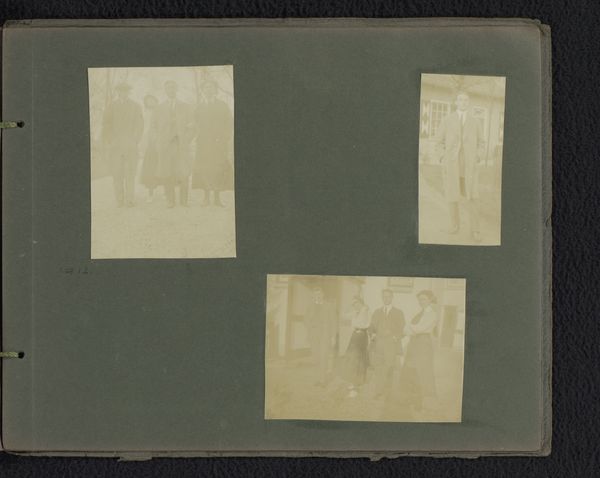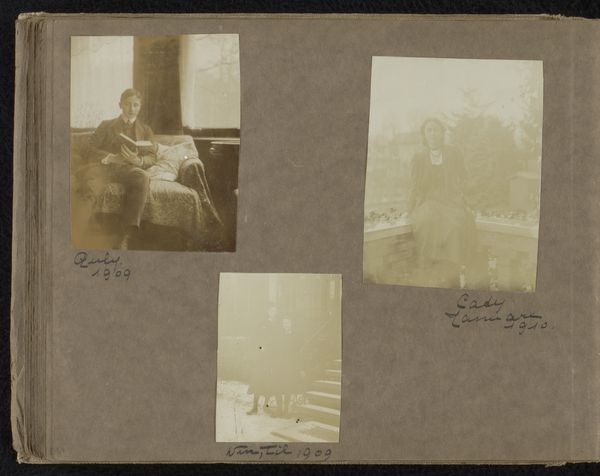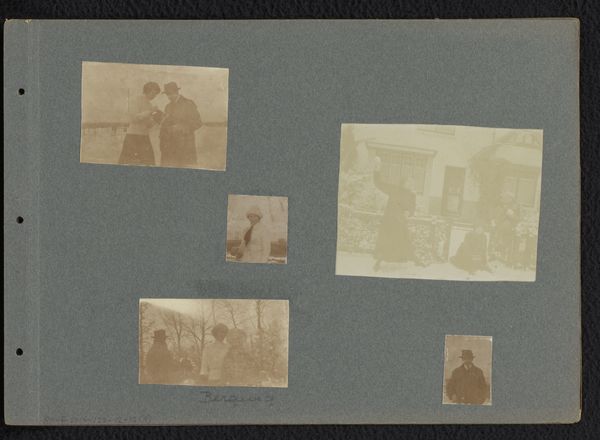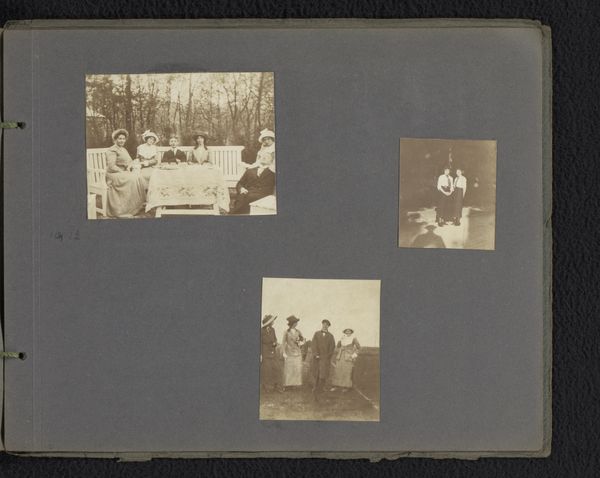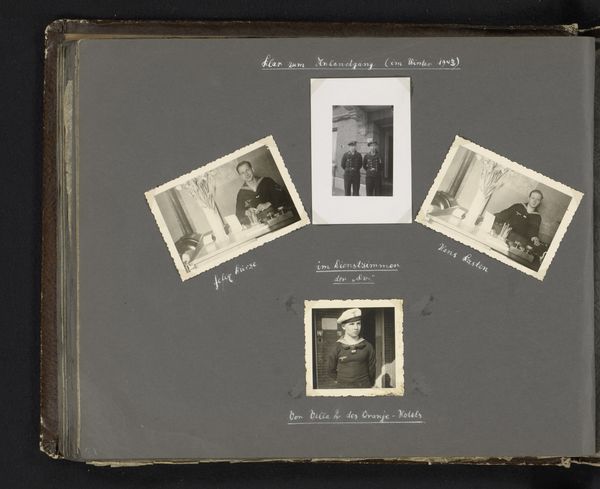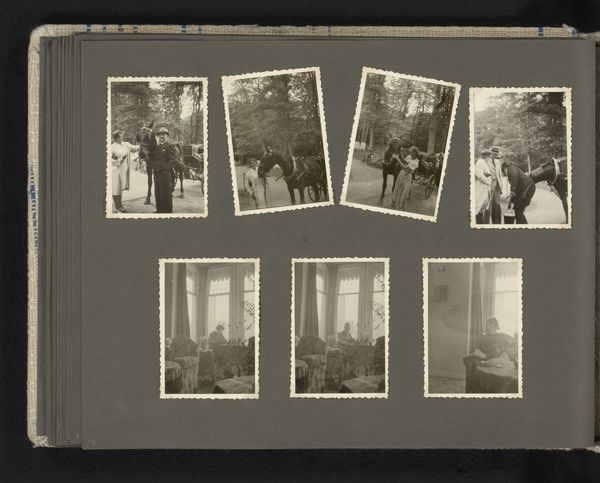
photography
#
portrait
#
photography
#
genre-painting
Dimensions: height 240 mm, width 300 mm
Copyright: Rijks Museum: Open Domain
Editor: We're looking at "Gezin van Loentje Onnen in Brussel en Schaarbeek," a photographic artwork made between 1912 and 1914 by Carolina (Loentje) Frederika Onnen. It's a set of snapshots capturing her family life. There's a really personal feel to it, like glimpsing someone’s memories. What do you notice in this album page? Curator: It whispers of a time when photography was shedding its formal skin, beginning to capture the everyday with a kind of naive poetry. This isn’t staged in the grand manner; instead, it's imbued with an intimate sense of observation. Don’t you feel you’re not so much *looking* at photographs, as *eavesdropping* on stolen moments? Editor: I see what you mean. There's something informal about the arrangement on the page, too. The placement of each photograph. Curator: Yes! It echoes how we physically piece together memories. One moment snagged, then another, placed together— perhaps consciously or unconsciously. It’s the family presented almost as genre painting in photographic form, yet simultaneously deeply personal and somewhat distanced through its form as a study album page, if you follow me. It's quite curious, like a found diary. Editor: That's interesting. Like fragments of stories coming together, but still a bit ambiguous. What strikes you most about the whole thing? Curator: It’s the quiet that gets to me. No clamorous narratives, but instead this quietness of observed domestic life from so long ago. Editor: Yeah, I see it. Curator: I like that there's no narrative conclusion, do you feel that? The end of the album may just be the day someone got bored of archiving their life, like us, the viewer, suddenly stopped archiving. The real world continues. Editor: I think so, too. I was initially drawn in by the quaint aesthetic, but it really makes you consider how different generations look at similar lives with different cultural contexts and mediums. It makes you wonder about our ways of archiving things today, which is, in itself, intriguing.
Comments
No comments
Be the first to comment and join the conversation on the ultimate creative platform.

